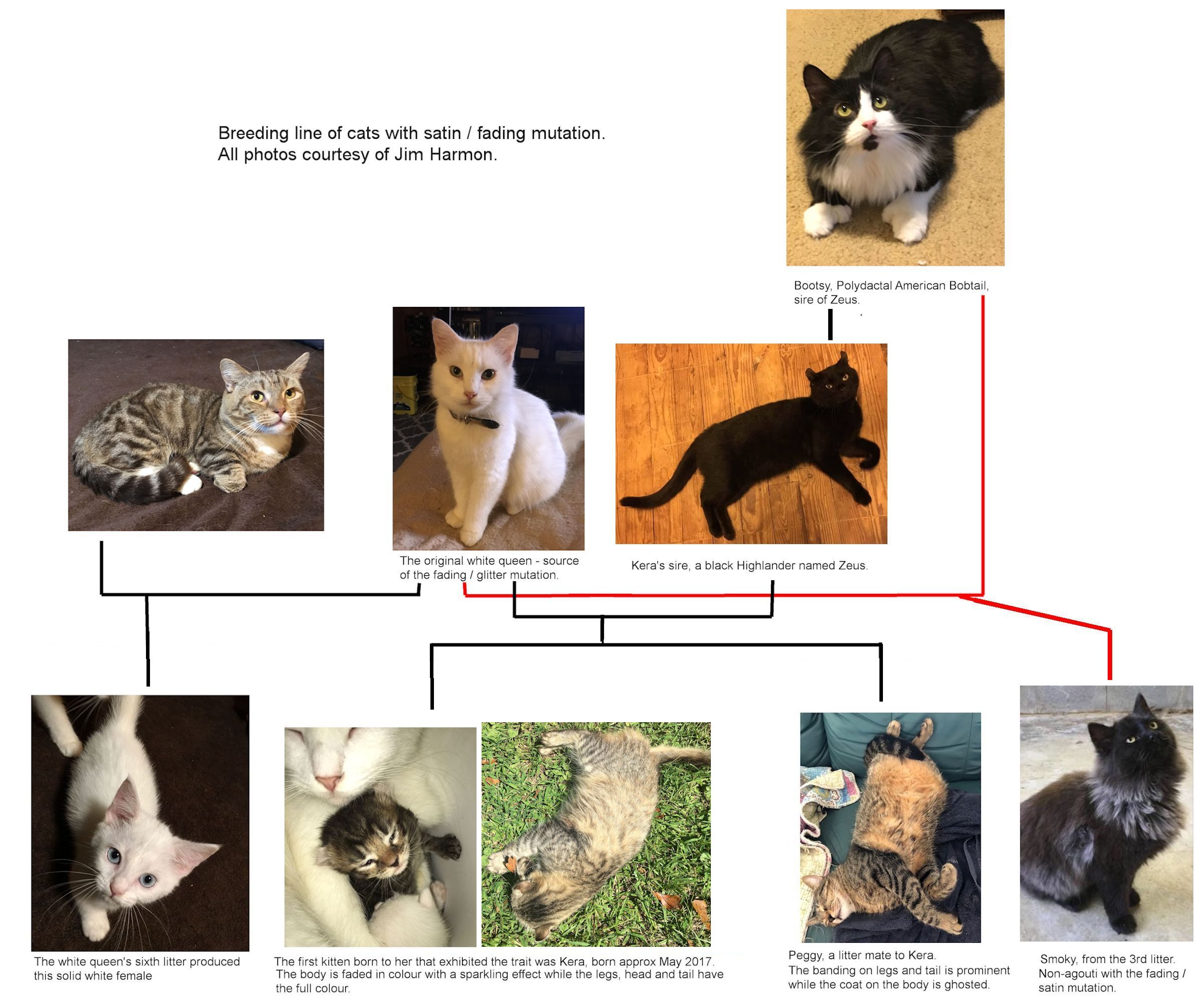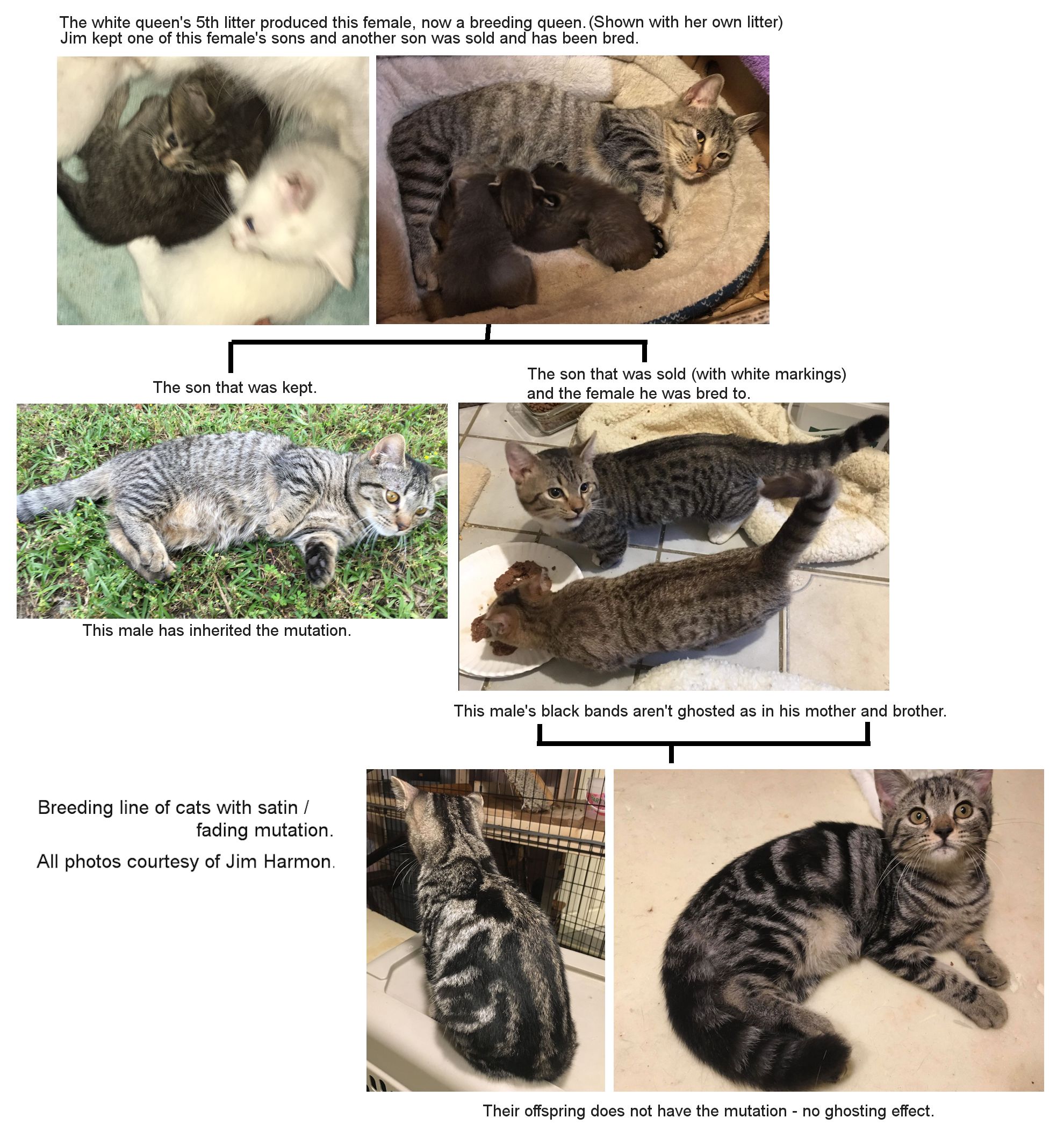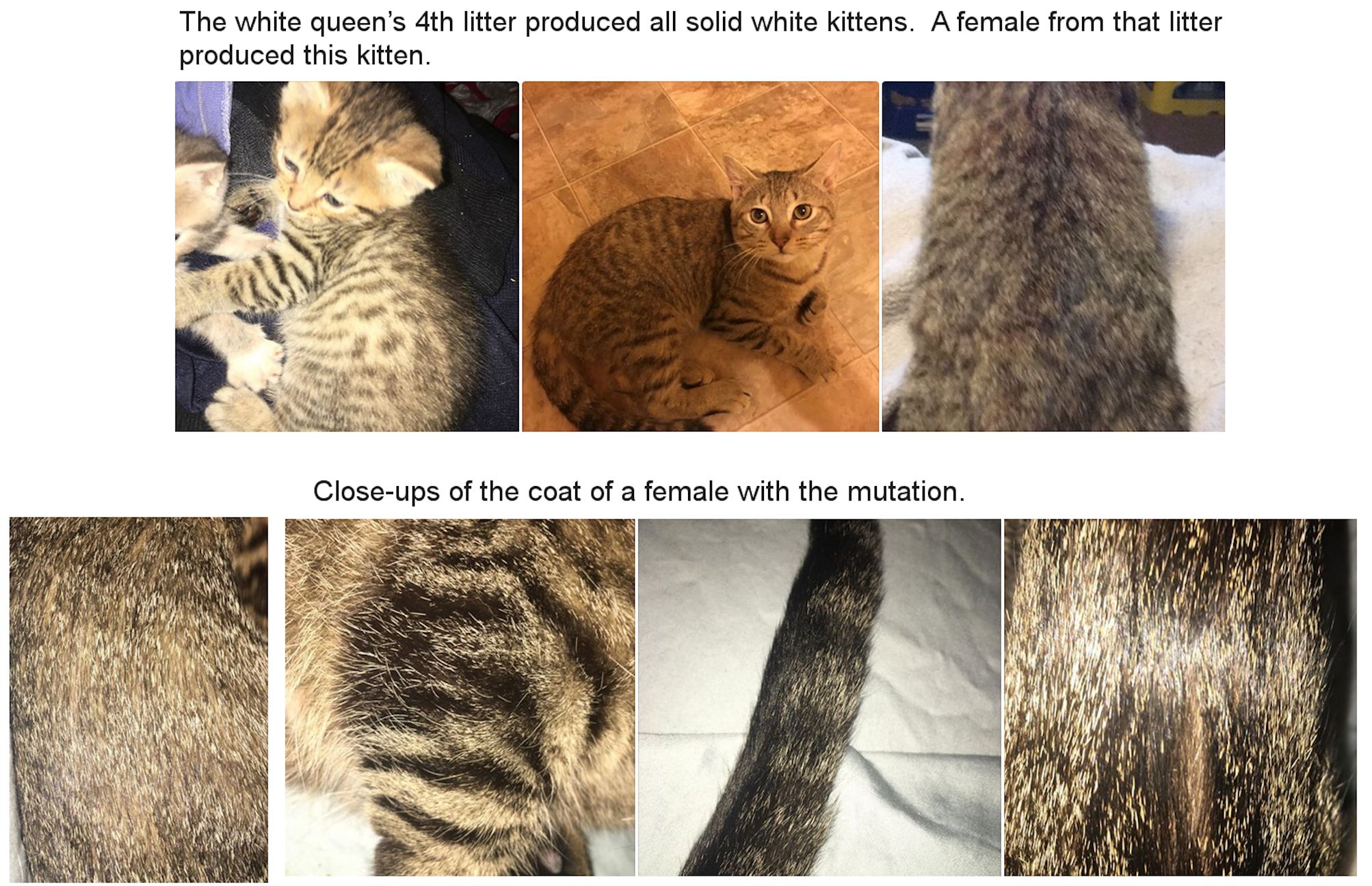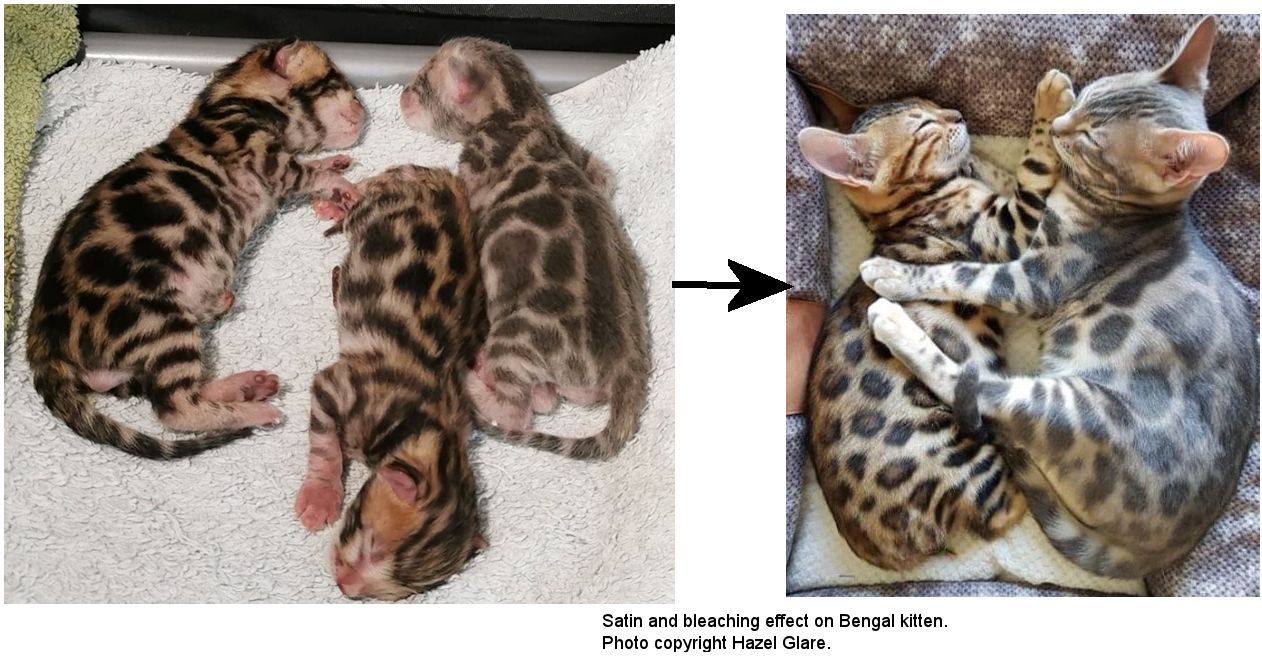
GHOSTING MUTATION (SATIN WITH COLOUR FADING, FALSE SMOKE)
Jim Harmon of Paris, Mississippi, has kindly shared these photos and information on a satin/fading mutation that has occurred in his cats and which he refers to as “ghosted.” His cat exhibit a satiny, colour-fade mutation similar to the American Satins bred by Jamie Ackerson in Oregon Satin, Glitter and Grizzle in Cats and La Perm Bleaching Mutation reported by Jenny Ägirsdotter. None of Jim’s cats have silver gene in their lines. When present on solid colour cats, the mutation appears to cause an effect like a poorly marked smoke even though there is no silver (inhibitor) gene present. It may be a new TYR (tyrosinase) variant.
It looks as though a gene is affecting deposition of pigment resulting in either white-tipped or translucent-tipped hairs or translucent bands in the ticked hairs. Normally agouti hairs are black-tipped. The effect seems to be temperature-sensitive as kittens are born fully coloured, but their torso becomes paler as they grow white-tipped or translucent-tipped hairs in the coat. The head, legs and tail lack these pale-tipped hairs. On tabby cats, the pale tipping obscures the pattern and produces a sparkling effect that gives the “ghosted” appearance. In self coloured cats the hairs are not banded and the hairs are more evenly faded along the length, giving the smoke-like pattern shown in the photos. Kittens with this mutation are usually born with long white hairs that are usually on hind legs or stomach.
The mutation originated with a white female of unknown ancestry and appears to be dominant. Several generations of satin/faded cats have been bred from her and unrelated males. Offspring that don’t show the ghosting effect produce only full-coloured cats i.e. the gene is not carried, but is always expressed. It isn’t yet known if cats with 2 copies of the gene look different from cats with one copy.
Jim’s original queen was a solid white domestic that produced at least 6 litters over a period of 4 years. Although it can’t be seen on her white coat, she was the original carrier of the trait. She is registered with TICA as a solid white Domestic Longhair (01T 041514 104), approximate date of birth 15-Apr-2014.

The first ghosted kitten born to the white queen was Kera, from her 2nd litter, born approx May 2017. Kera’s coat noticeably changed colour at different angles and had a shine or sparkle in the sun. As a kitten she looked like a normal black tabby, but as she aged her tabby stripes virtually disappeared as the growth of white tipped or translucent tipped hairs obscured the pattern.
In the white queen’s 3rd litter she had a solid black male who developed this smoke-like colouration. His colour progression is show in a series of photos. Smoky was the result of an accidental mating in December 2017. He was born black and developed a “false smoke” effect although none of the cats have the silver gene. He seems to illustrate the effect of the mutation on a non-agouti (non-ticked) coat.

The white queen’s 4th litter produced all solid white kittens. Jim kept one female from that litter. She also has the mutation and produced ghosted kittens. The white queen's 5th litter produced a tabby female who is a current breeding queen. Jim still has one of her male offspring and sold another male to another breeder. The photos show that one male has the mutation, but the other does not and only sires full colour offspring on an unrelated female. Two kittens from this female's litter were solid black at birth and (as at July 2020) Jim is waiting for their coats to grow out to see which form of the trait they exhibit.

The first classic tabby male with the mutation was born 30-Mar-2020 and began developing the white tipped hairs at about 2 weeks old. Also, long white hairs grew on his hind legs, but were there but later either grew into the coat or fell out.

On Facebook, Bengal breeder Hazel Glare reported a similar trait in one of her cat.
